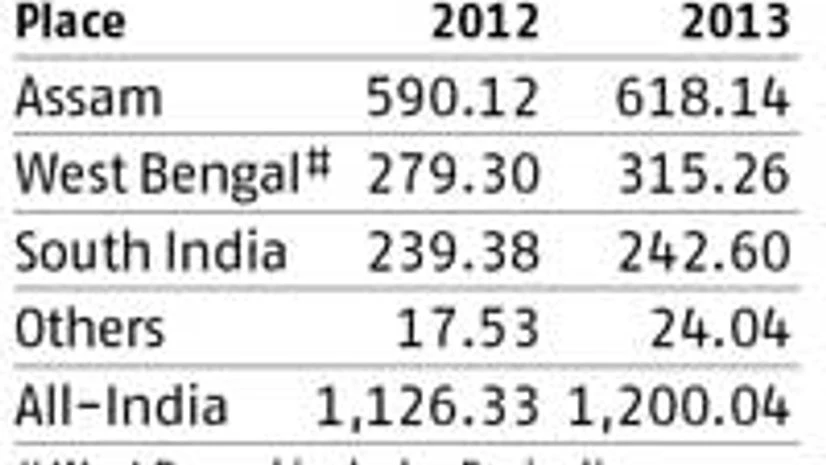If rain gods don't intervene in the next couple of weeks, many tea lovers won't get to sip the Darjeeling first flush, the region's first tea crop after a period of dormancy.
Traditionally reserved for royalty in India, the Darjeeling first flush is now reeling under an unusually dry spell that has lowered production 65 per cent in March. Production in March is important, as it accounts for 10-15 per cent of the total quantity of first flush. About 80 per cent of the first flush is exported.
The first flush (March-April) comes in floral, mild and muscatel flavours and many favour it over the second flush (May-June), which has a more pronounced muscatel flavour.
"This is the flavour that mostly goes to continental Europe, including the UK," said Sanjay Bansal, chairman, Ambootia Group. Ambootia's Brumes D'Himalaya SFTGFOP1, the Himalayan Mists, is a first flush made for French gourmet tea company Mariage Freres, while the Spring Dance tea is retailed at London's famous store, Harrods.
"The situation is grim. If it doesn't rain in the next two-three days, revenues from the first flush will come down dramatically," said A N Singh, managing director and chief executive of Goodricke and chairman of the Indian Tea Association. Goodricke owns Castleton, a favourite of tea connoisseurs across the world. In September 2013, 1.2 kg of Castleton had fetched a record Rs 88,000 at an auction in Russia.
Though Assam, another tea-producing region, is also recording dry weather, producers aren't particularly perturbed.
Unlike Darjeeling, which produces only 10 million kg a year, Assam produces 618 million (51 per cent of India's overall tea crop. Therefore, any drop in production assumes significant proportions in Darjeeling.
This season, Assam tea prices have risen 5-10 per cent. As of February, the tea crop in Assam saw a fall of 2.5-3 million kg.
For now, everyone is pinning hopes on the weather. "There are 30-40 per cent chances of rains in the next few days. Dark clouds have gathered," said the owner of a tea estate in Darjeeling.

)
